
The Messa da Requiem is a musical setting of the Catholic funeral mass (Requiem) for four soloists, double choir and orchestra by Giuseppe Verdi. It was composed in memory of Alessandro Manzoni, whom Verdi admired. The first performance, at the San Marco church in Milan on 22 May 1874, marked the first anniversary of Manzoni's death.
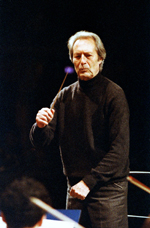
Carlo Maria Giulini was an Italian conductor. From the age of five, when he began to play the violin, Giulini's musical education was expanded when he began to study at Italy's foremost conservatory, the Conservatorio Santa Cecilia in Rome at the age of 16. Initially, he studied the viola and conducting; then, following an audition, he won a place in the Orchestra dell'Accademia Nazionale di Santa Cecilia.

István Kertész was a Hungarian orchestral and operatic conductor who throughout his brief career led many of the world's great orchestras, including the Cleveland, Chicago, Philadelphia, New York, Los Angeles, Pittsburgh, Detroit, San Francisco and Minnesota Orchestras in the United States, as well as the London Symphony, Vienna Philharmonic, Berlin Philharmonic, Royal Concertgebouw Orchestra, Israel Philharmonic, and L'Orchestre de la Suisse Romande. His orchestral repertoire numbered over 450 works from all periods, and was matched by a repertoire of some sixty operas ranging from Mozart, Verdi, Puccini and Wagner to the more contemporary Prokofiev, Bartók, Britten, Kodály, Poulenc and Janáček. Kertész was part of a musical tradition that produced fellow Hungarian conductors Fritz Reiner, Antal Doráti, János Ferencsik, Eugene Ormandy, George Szell, János Fürst, Peter Erős, Ferenc Fricsay, and Georg Solti.

Dietrich Fischer-Dieskau was a German lyric baritone and conductor of classical music. One of the most famous Lieder performers of the post-war period, he is best known as a singer of Franz Schubert's Lieder, particularly "Winterreise" of which his recordings with accompanists Gerald Moore and Jörg Demus are still critically acclaimed half a century after their release.
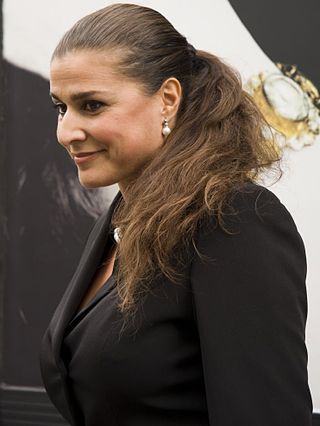
Cecilia BartoliOMRI is an Italian coloratura mezzo-soprano opera singer and recitalist. She is best known for her interpretations of the music of Bellini, Handel, Mozart, Rossini and Vivaldi, as well as for her performances of lesser-known music from the Baroque and Classical period. She is known for singing both soprano and mezzo roles.
Elisabeth Grümmer was a German soprano. She has been described as "a singer blessed with elegant musicality, warm-hearted sincerity, and a voice of exceptional beauty".

Inese Galante is a Latvian soprano opera singer. Galante is known for a great beauty of tone, nuanced pianissimos and sensitive command of dynamics and colour. Her performance of Vladimir Vavilov's Ave Maria, from her "Debut" album (1995) attracted worldwide interest in the piece.

José Francisco Araiza Andrade, is a Mexican operatic tenor and lied singer who has sung as soloist in leading concert halls and in leading tenor operatic roles in the major opera houses of Europe and North America during the course of a lengthy career. Born in Mexico City, he studied singing at the Conservatorio Nacional de Música de México and later in Germany, with Mozartian tenor Richard Holm, and lieder interpretation with Erik Werba. He made his operatic debut in 1970 in Mexico City as First Prisoner in Beethoven's Fidelio. Araiza initially came to international prominence singing in Mozart and Rossini operas, but in the 1980s broadened his repertoire to include Italian and French lyric tenor roles and Wagnerian roles such as Lohengrin and Walther von Stolzing. He was made a Kammersänger of the Vienna State Opera in 1988. Now retired from the opera stage, he teaches singing and serves on the juries of several international singing competitions.
Stabat Mater, FP 148, is a musical setting of the Stabat Mater sequence composed by Francis Poulenc in 1950.
Antonín Dvořák's Requiem in B♭ minor, Op. 89, B. 165, is a funeral Mass scored for soloists, choir and orchestra. It was composed in 1890 and performed for the first time on 9 October 1891, in Birmingham, England, with the composer conducting.

Stabat Mater is a 2008 composition for choir and orchestra by Karl Jenkins, based on the 13th-century prayer Stabat Mater. Like much of Jenkins' earlier work, the work incorporates both traditional Western music with ethnic instruments and vocals, this time focusing on the Middle East. The first recording features the Royal Liverpool Philharmonic Orchestra and Choir, along with two soloists, Lithuanian mezzo-soprano Jurgita Adamonyte, and English musician Belinda Sykes, who both sings and performs on the duduk, an Armenian reed instrument.

Milagro Vargas is an American mezzo-soprano known for her distinctive voice and stage presence. She has appeared as an international soloist in operatic, orchestral, chamber music and recital settings.
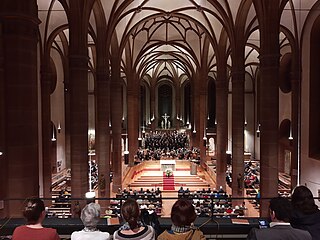
Antonín Dvořák's Stabat Mater, Op. 58 (B. 71), is an extended setting for vocal soloists, choir and orchestra of the 20 stanzas of the Stabat Mater sequence. Dvořák sketched the composition in 1876 and completed it in 1877. It has been characterized as a sacred cantata and as an oratorio, and consists of ten movements of which only the first and the last are thematically connected. Its total performance time is around 85 minutes.
The Diapason d'Or is a recommendation of outstanding (mostly) classical music recordings given by reviewers of Diapason magazine in France, broadly equivalent to "Editor's Choice", "Disc of the Month" in the British Gramophone magazine.
Giovanni Tadolini was an Italian composer, conductor and singing instructor, who enjoyed a career that alternated between Bologna and Paris. Tadolini is probably best known for completing six sections of Rossini's 1833 version of the Stabat mater after the latter fell sick. However, he also composed eight operas as well as sinfonias, sonatas, chamber music, and numerous pieces of religious music and art songs.
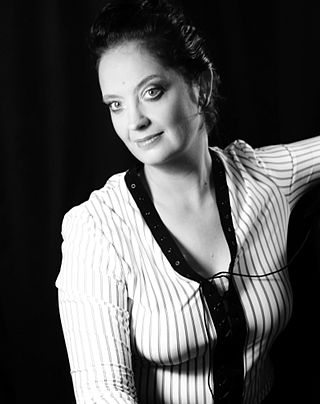
Ann Hallenberg is a Swedish mezzo-soprano. She has an operatic career on the stage and concert platform around Europe. She regularly appears in major opera houses and festivals: embracing roles by Rossini, Mozart, Gluck, Handel, Vivaldi, Monteverdi, and Purcell.
Christoph Spering is a German conductor of classical music, especially church music. He founded in 1985 the choir Chorus Musicus Köln and in 1988 the orchestra Das Neue Orchester.

Riccardo Frizza is an Italian conductor, particularly known for his work in the Italian operatic repertoire. After making his professional conducting debut in 2001 with Rossini's Stabat Mater at the Rossini Opera Festival in Pesaro, he went on to conduct in the leading opera houses of Europe and the United States, including La Scala, La Fenice. the Paris Opera, and New York's Metropolitan Opera.
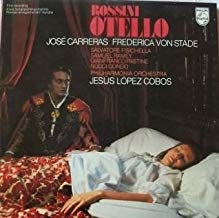
Otello is a 153-minute studio album of Gioachino Rossini's opera Otello, performed by José Carreras, Nucci Condò, Salvatore Fisichella, Alfonso Leoz, Keith Lewis, Gianfranco Pastine, Samuel Ramey and Frederica von Stade with the Ambrosian Chorus and the Philharmonia Orchestra under the direction of Jesús López Cobos. It was released in 1979.

The Rossini Bicentennial Birthday Gala is a live album of operatic and sacred music by Gioachino Rossini, performed by Rockwell Blake, Craig Estep, Maria Fortuna, Thomas Hampson, George Hogan, Marilyn Horne, Kathleen Kuhlmann, Mimi Lerner, Chris Merritt, Jan Opalach, Samuel Ramey, Henry Runey, Frederica von Stade, Deborah Voigt, the Concert Chorale of New York and the Orchestra of St. Luke's under the direction of Sir Roger Norrington. It was released in 1993 as a 119-minute video album and in 1994 as a 78-minute CD.














